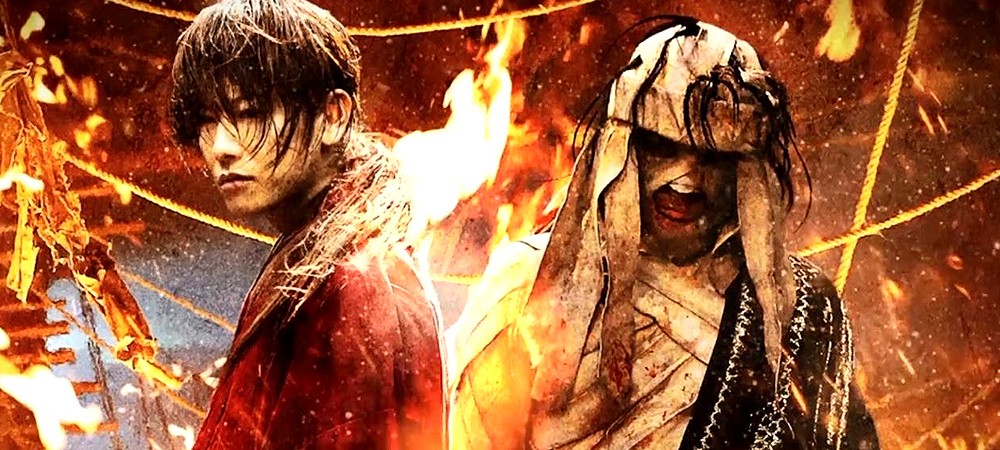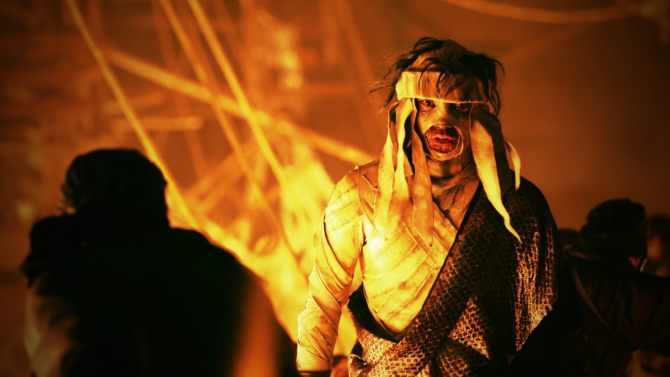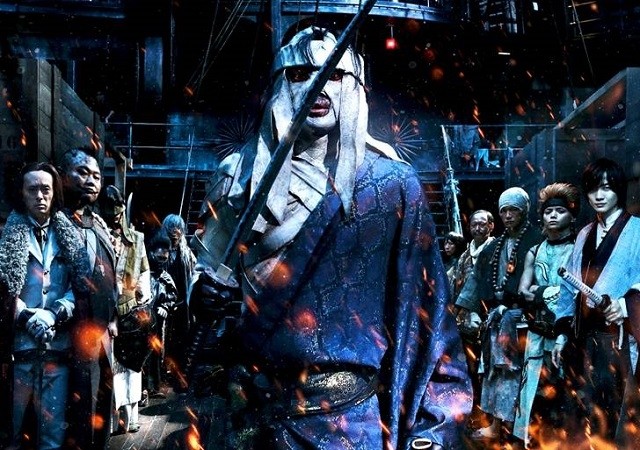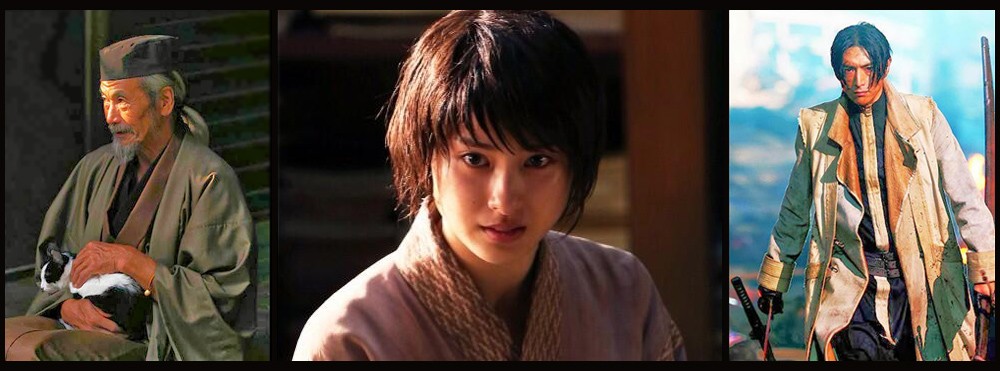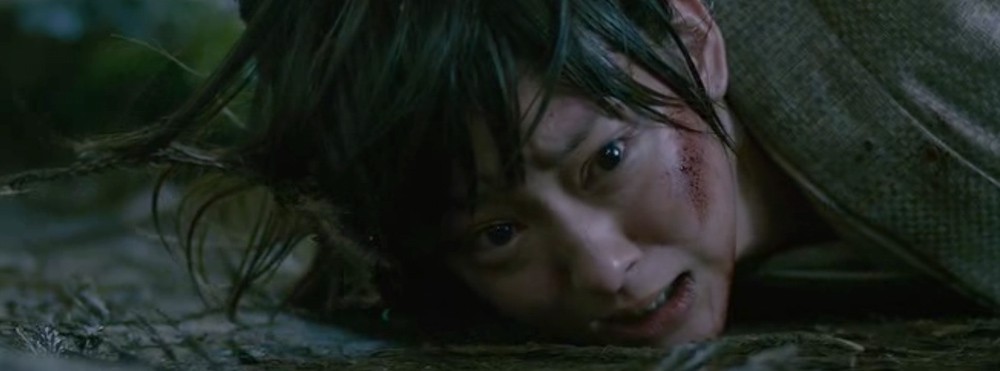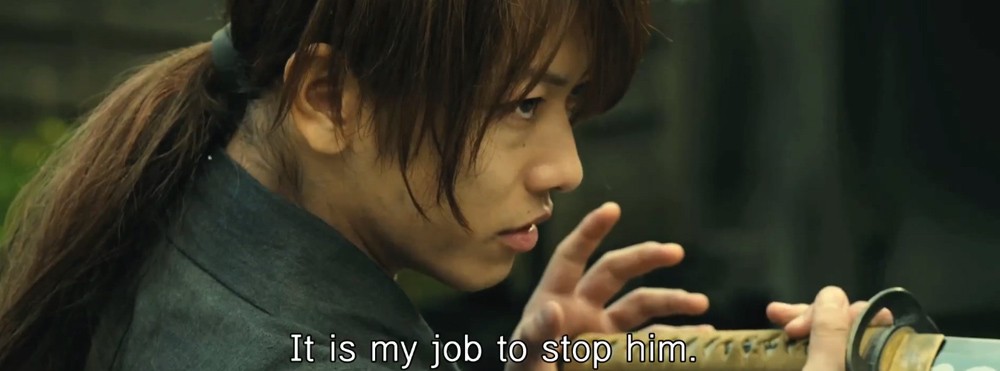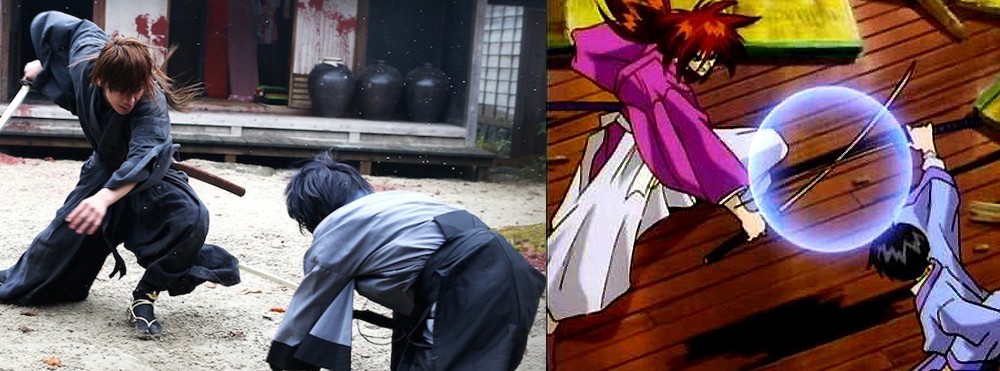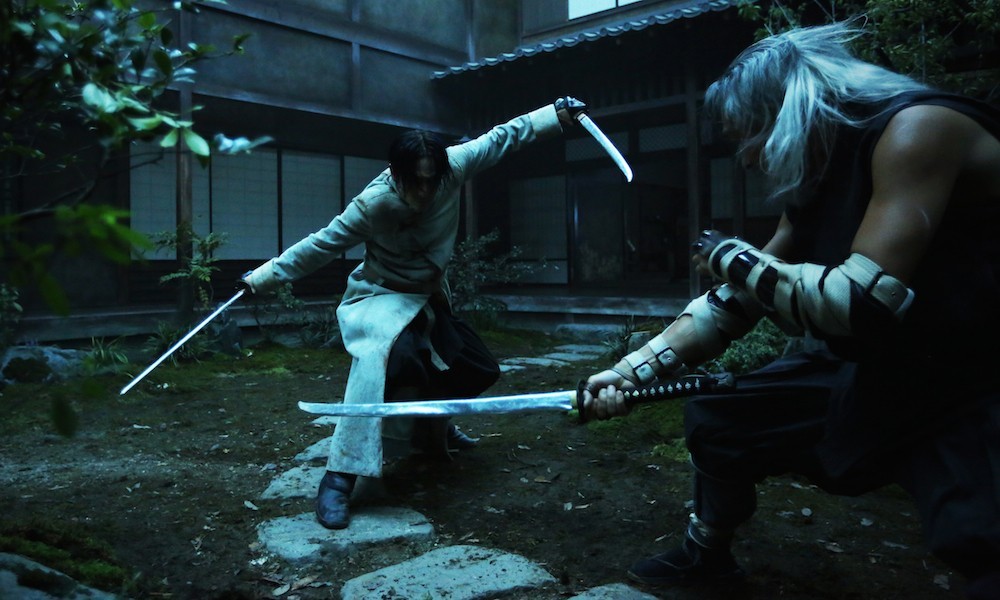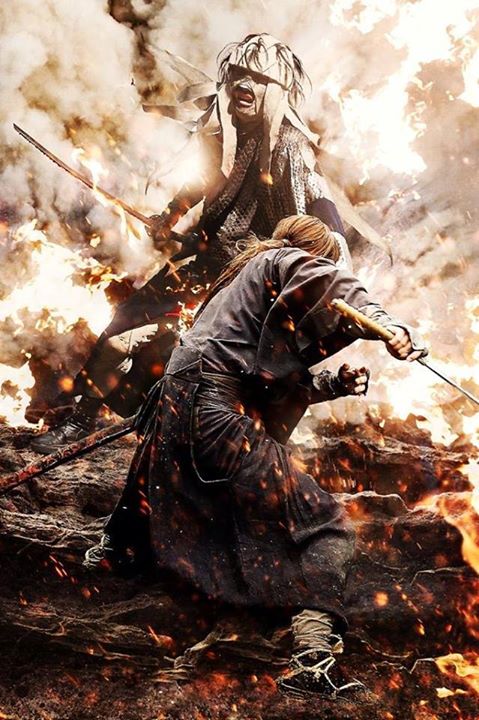Rurouni Kenshin: Kyoto Inferno Movie Review – This is how you make an anime-to-live action film!
The Good: Damn good story arc, great pacing and the action, man…THE ACTION! The Bad: Cliffhanger-ending, but then it’s not that bad when the next film opens next month! 😀 The Ugly: Makoto Shishio’s costume. I’m not that sold with the look…yet. This is the Kenshin movie that we’ve all ... Rurouni Kenshin: Kyoto Inferno Movie Review – This is how you make an anime-to-live action film!

The Good: Damn good story arc, great pacing and the action, man…THE ACTION!
The Bad: Cliffhanger-ending, but then it’s not that bad when the next film opens next month! 😀
The Ugly: Makoto Shishio’s costume. I’m not that sold with the look…yet.
This is the Kenshin movie that we’ve all been waiting for. While the first movie is a great step in adapting the manga (or anime) into live-action territory, it felt more of a ‘proof-of-concept’ than anything. Sure we get a great cast of actors filling in the roles of Kenshin Himura (Takeru Satoh), Sanosuke Sagara (Munetaka Aoki ), Kaoru Kamiya (Emi Takei), Megumi Takani(Yu Aoi), Hajime Saito (Yosuke Eguchi ) and Yahiko Myojin (Taketo Tanaka who was replaced by Kaito Ohyagi for the 2nd and 3rd film); a decent enough script, and an amazing treatment for the swordplay, but the first movie felt too “safe” and predictable even with the changes in canon. Perhaps that’s the reason why the studios didn’t commit to a full-on ‘trilogy’ right off-the-bat? In any case I don’t think they were ready for how well the movie was received locally and internationally. And thanks to the success of the first film, it pushed the studios to create the one story arc that truly mattered in franchise: The Shishio Arc.
To the uninitiated, Makoto Shishio is Kenshin’s most fearsome nemesis and he is scrumptiously portrayed by Battle Royale star, Tatsuya Fujiwara. Shishio is a Hitokiri or Slasher in the pre-Meiji era similar to how Kenshin started, but while Kenshin took a path of reconciliation and peace, Shishio brewed anger, vengeance and power. A failed assassination attempt from the government to rid themselves of Shishio’s services created a monster of a man and, now, with the help of his mercenary group, the Juppongatana (or the Ten Swords) he plans to spark a war that would send the country into chaos.
This is where Kenshin comes in. A former infamous killer, Kenshin now strives for a life of peace until the Meiji Imperialist and Statesman Toshimichi Okubo asks Kenshin to lend his talents once again to quell this impending danger. Kenshin, with the help of his friends, colleagues, and new acquaintances like Miss Misao Makimachi (Tao Tsuchiya) and the rest of the Oniwabanshu—a Ninja Clan settled in Kyoto , must muster the strength to stand up to Shishio and his cohorts if he wants to preserve this new era which he has shed blood for.
If the first film felt like they were skirting around and playing it safe, the 2nd installment is where they step on the gas pedals and shift the gears to high! Rurouni Kenshin: Kyoto Inferno fires (pun intended) on all the cylinders and what we get is a magnificent action-adventure film worthy of the spirit of the Manga and Anime combined.
There are certain elements in the first film that they kept to a minimum with the second and one of them is the drawn-out expositions that traditional anime would employ (see: Kenshin Vs Jin-e with Kaoru on the first film and how long Kaoru had to explain to Kenshin why he shouldn’t revert back to killing).
In a cartoon you can stop time for an entire episode or two (or even 5 episodes like in Dragon Ball Z), and people wouldn’t find it weird. While time isn’t moving, internal dialogue and long-winded exposition usually ensues. While the format works wonderfully in the anime, it will not necessarily translate the same way in a live-action film. In the cinematic narrative, when you start telling your audience the story rather than showing them the story, it can diminish a scene’s overall impact. You start including too much exposition and you break the audience’s suspension of disbelief; do this often and you start to lose the audience’s attention altogether.
The exclusion of the freeze-time-insert-exposition formula in the second film really made the movie flow with ease and better pacing. Cinematic narrative aside, Kyoto Inferno also boasts of better and much fluid fight sequences than the first.
The highlight of the Rurouni Kenshin films (and anime) has always been the fight scenes and I’m happy to note that they really jacked the action up on this film! There is an unbelievable attention to detail and fight technique that I have to give props to the fight choreographers on this one. The fact that the producers didn’t try to replicate the fight scene from the cartoons but instead build upon its foundation makes the film far richer than it already is. There is a clear respect to the source material but also clear understanding of what works within the given medium.
In fact, I actually tried watching the anime again and compared the fight scenes between the movie and the original source material. The movie actually has more dynamic choreography than the anime. For example:
In the anime sequence of Kenshin and Sojiro Seta’s (Ryunosuke Kamiki) first battle both fighters only executed one move. The rest of the episode was dedicated to the other characters spouting exposition about swordsman’s aura and techniques. In the movie, the long narratives explaining the techniques were replaced by the actual fight itself. The dance between Kenshin and Sojiro is well executed that exposition is revealed through the action sequence themselves.
Another great example of a wonderful action sequence is the battle of Okina (Nenji Kashiwazak) and Aoshi Shinomori (Yusuke Iseya). While the cartoon version raises enough tension, the film delivers a much drawn out dance which again gives us perspective of each character’s battle prowess. In each ‘main’ battle sequences, the producers try to infuse known character signature moves without making it too tacky or comical such as Aoshi’s Kaiten Kenbu Rokuren— where he executes six quick slashes in succession with his kodachi. That particular scene was done flawlessly giving a nod to fanboys while grounding the action to the general movie-goers. Oh, also, no one shouts their signature moves here while in the middle of a battle because, really, who does that in an actual fight?
Overall, Kyoto Inferno presents Rurouni Kenshin as it should be – a proper action-adventure film with a solid cinematic narrative, pacing, and mind-blowing cinematography and fight choreography. If you’re a fan of the series, you definitely need to catch this on the big screen. And while Kyoto Inferno ends with a cliffhanger, we actually do not have to wait a full year before we get a taste of an obviously epic finale. The continuation of the Shishio Arc, Rurouni Kenshin: The Legend Ends opens to Philippine cinemas this coming September 24, 2014! Woohoo!



